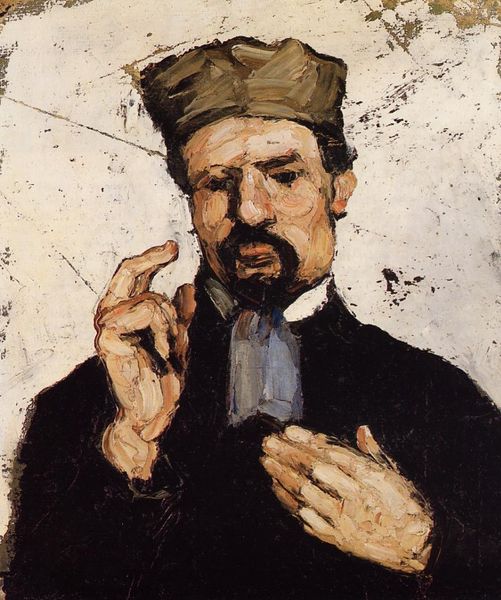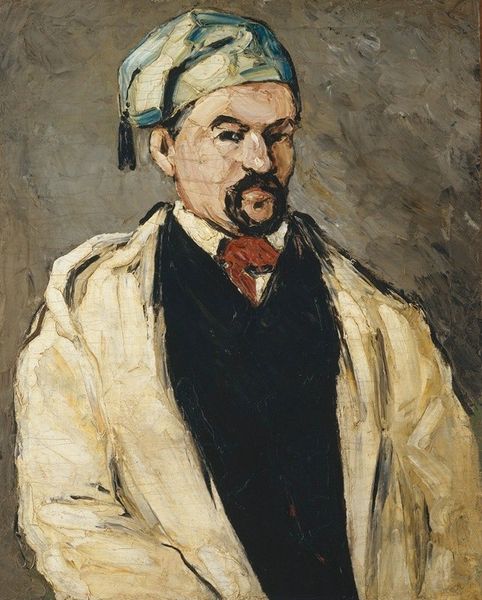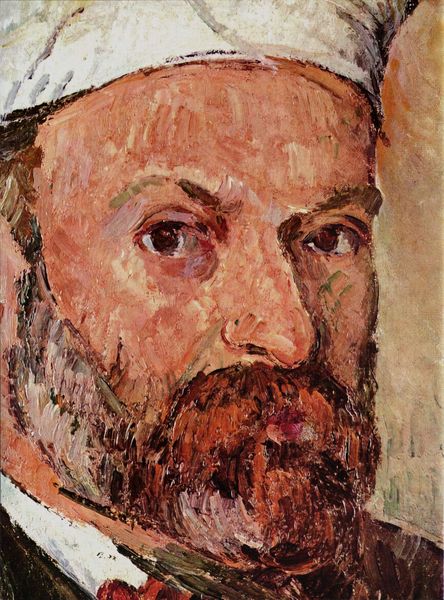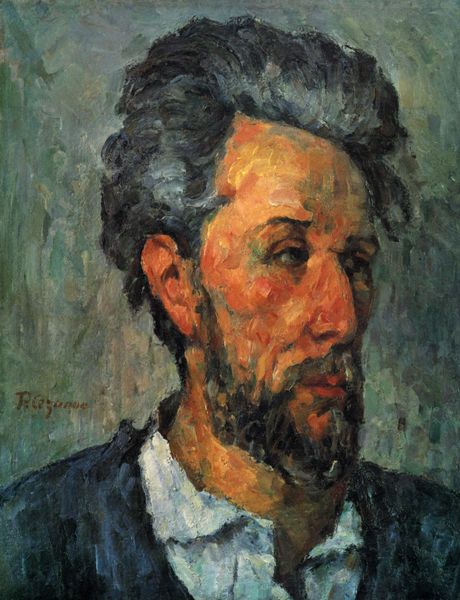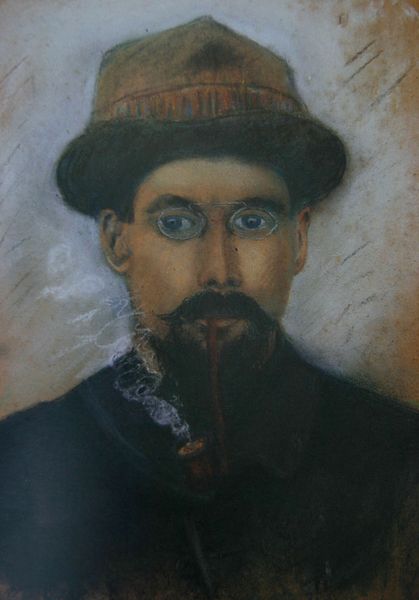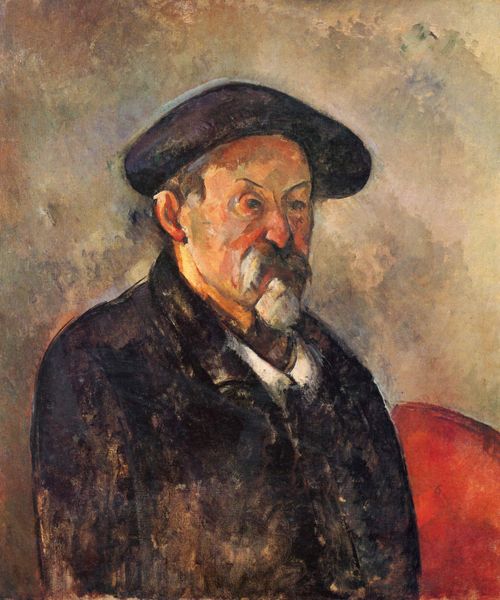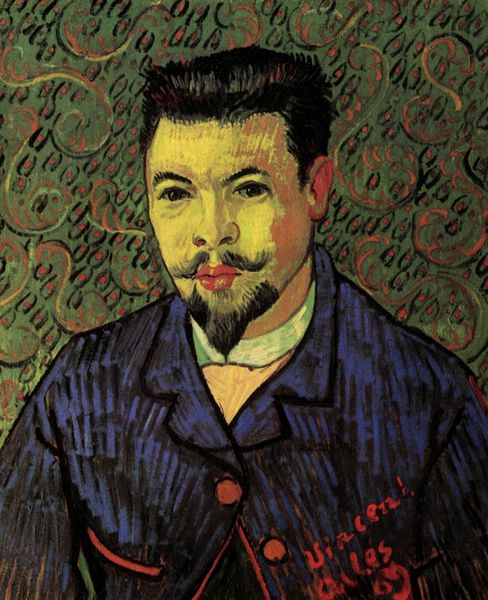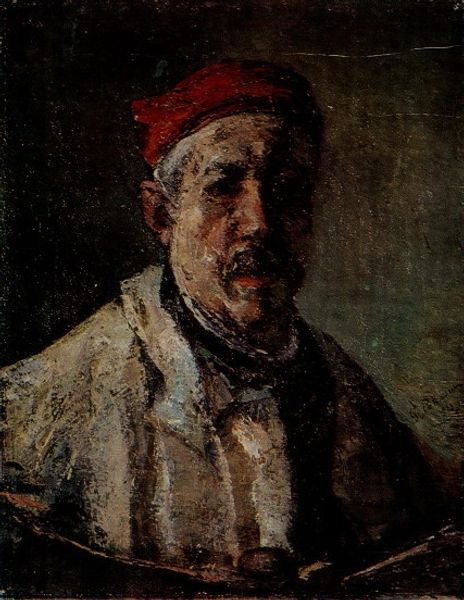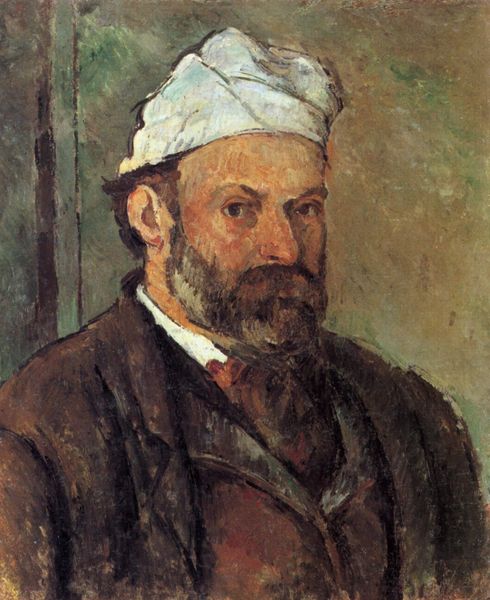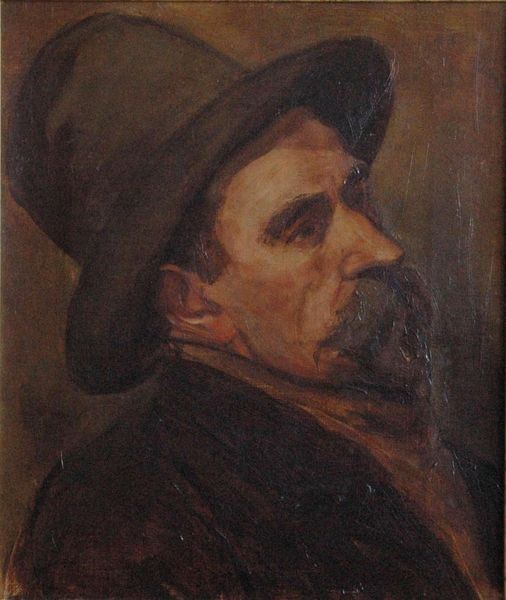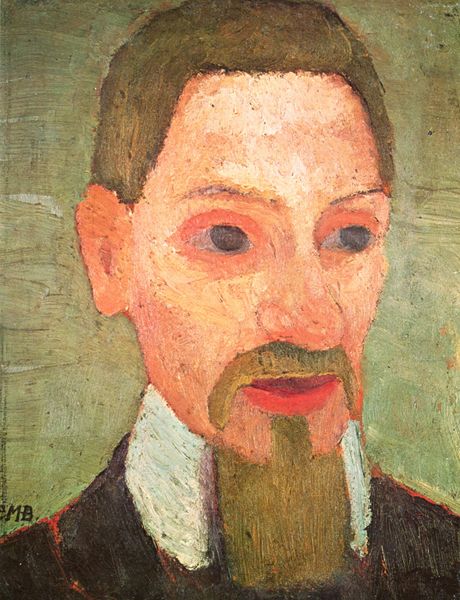
Copyright: Public domain
Curator: There’s a quiet intensity to this portrait. The sitter’s gaze is direct, unwavering almost. Editor: This is "Portrait of Uncle Dominique in a Turban," painted by Paul Cézanne in 1866. He created several paintings of his uncle, but this one stands out due to its vibrant colors and use of impasto. Curator: The turban is particularly striking. What might Cézanne have intended with this headwear? Editor: Historically, turbans were used as marks of cultural identity, rank, or even religious affiliation. It seems Cézanne is deliberately dressing Dominique up. There’s an element of theatrics at play here. He seems to be experimenting with Orientalist tropes to explore ideas around identity, self-fashioning, and perhaps challenge traditional portraiture. Curator: Or even playfully referencing artistic traditions, evoking a sense of history, perhaps alluding to a world of sultans and dignitaries, injecting an exotic flair. But it feels like there's more to it than that. The sheer volume and texture give it a sculptural presence almost independent of the sitter. The psychological intensity of the image makes me consider what the painting might mean as a symbolic statement of the subject's, and artist's personality. Editor: We have to acknowledge how artists often navigate expectations and demands to portray sitters with a certain degree of dignity and respect. By positioning his uncle in a turban, Cézanne elevates him, while also experimenting with the visual language of the exotic, disrupting bourgeois conventions. This portrait also precedes Cézanne's fully developed Post-Impressionistic style, revealing a young artist already pushing the boundaries of portraiture. Curator: This impasto technique creates depth but also conceals; the identity of Uncle Dominique becomes less about clear representation, and more about constructed character. Perhaps that says more about Cèzanne's exploration of portraying his uncle in particular and in how constructing identity can be layered and built upon expectations. Editor: Yes, by appropriating elements like the turban, Cézanne doesn’t just replicate existing power dynamics; he uses his artistic vision to probe the complex interaction between identity and representation, challenging existing forms of authority through representation. Curator: This truly shows us that paintings not only embody artistic intention but become reflections of socio-historical context. It's fascinating how even a portrait, so seemingly personal, can reflect the politics of the time.
Comments
No comments
Be the first to comment and join the conversation on the ultimate creative platform.
